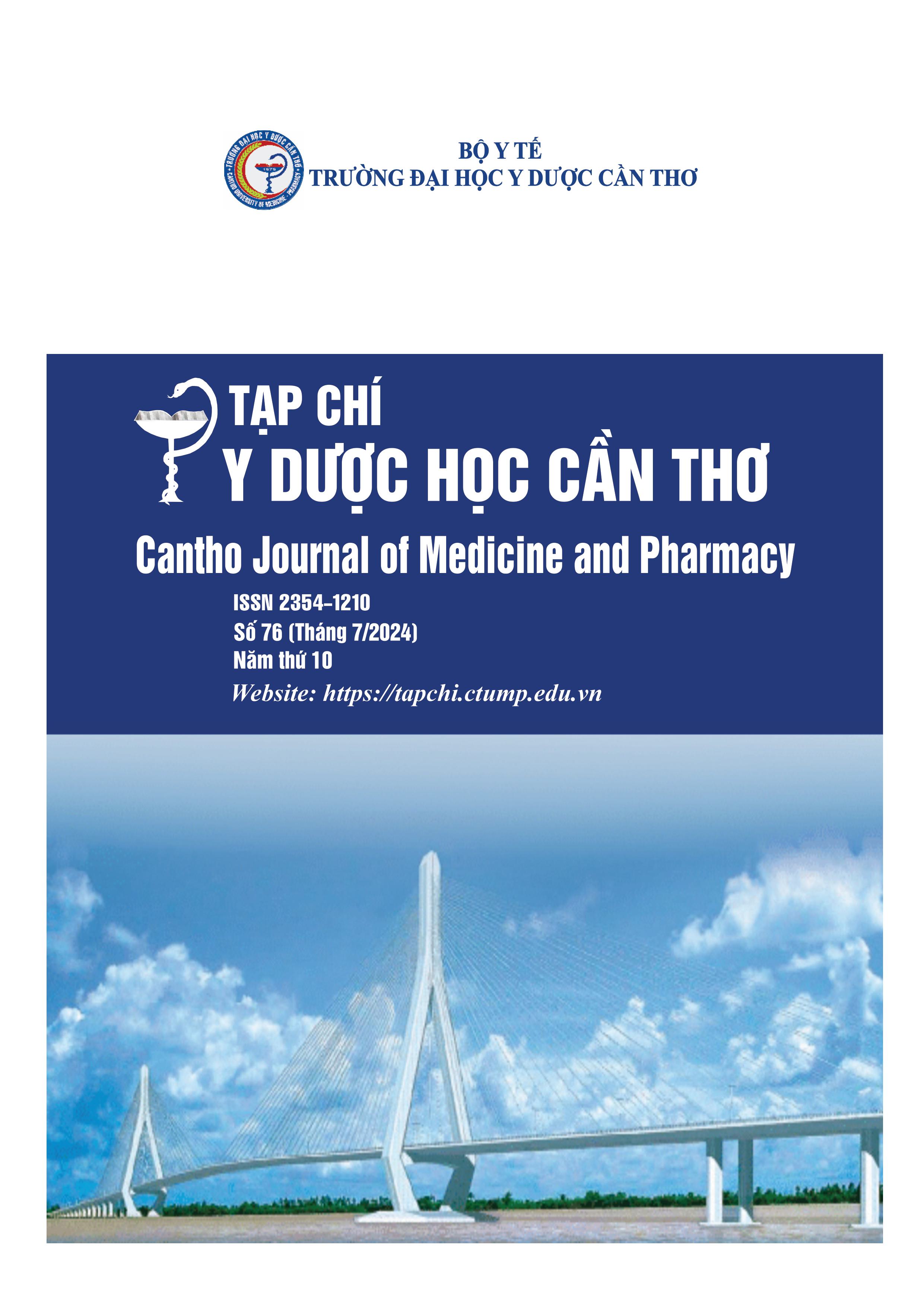CLINICAL FEATURES OF EPILEPSY IN CHILDREN FROM 2 MONTHS TO 15 YEARS OLD AT CAN THO CHILDREN'S HOSPITAL
Main Article Content
Abstract
Background: Epilepsy is a neurological disorder characterized by recurrent seizures, most often occurring in children and it has a special importance due to the high incidence rate, every year in developing countries in particular there are about 1.12 million children infected with the disease and in the world in general there are about 65 million people. The clinical manifestations of epilepsy are diverse and complex, but the consequences of epilepsy have a significant impact on both motor and cognitive aspects for children. Objective: To describe the clinical characteristics of epilepsy in children from 2 months to 15 years old at Can Tho Children's Hospital. Materials and methods: Cross-sectional descriptive study on 90 patients diagnosed with epilepsy and undergoing epilepsy treatment from May 2023 to May 2024. Results: The main age group with recurrent hospitalization was the group over 6 years old, accounting for 51.1%, with more girls than boys at 55.6%. Most children do not had a family history of epilepsy or slow motor, mental and language development. The age group with the most common seizure onset was the group <6 years old with 66.7%. Children with epilepsy had a frequency of seizures that was sparse, accounting for 77.8%, and most children had a non-motor seizure onset, accounting for 64.4%. Generalized epilepsy accounted for the highest rate at 78.9%. Most of the first seizures were general seizures, accounting for 77.8%; among partial seizures, simple partial seizures accounted for the highest proportion 16.7%. Conclusion: Generalized epilepsy accounted for the majority of the research subjects, the age at which the first seizure begins was mostly under 6 years old, the frequency of seizures was mainly rare and the type of seizure onset in most the child is inactive.
Article Details
Keywords
Epilepsy, recurrence, children
References
2. Đặng Anh Tuấn. Nghiên cứu lâm sàng, tổn thương não và các yếu tố liên quan đến động kinh cục bộ kháng thuốc ở trẻ em. Trường Đại học Y Hà Nội. 2018. 172
3. Fisher FS, Cross JH, DH’Souza C, French JA, Haut SR, et al. Instruction manual for the ILEA 2017 operational classification of seizure types. Epilepsia. 2017. 58(4), 531 – 542, https://doi.org/10.1111/epi.13671.
4. Ngô Anh Vinh, Hồ Đăng Mười. Đặc điểm lâm sàng, cận lâm sàng động kinh kháng thuốc ở trẻ em tại Khoa Thần kinh Bệnh viện Sản nhi Nghệ An năm 2020. Tạp chí Y học Việt Nam. 2020. 527(2), https://doi.org/10.51298/vmj.v527i2.5842.
5. Đồng Thị Hằng. Đặc điểm lâm sàng, cận lâm sàng và thực trạng điều trị động kinh trẻ em tại Bệnh viện Sản Nhi Nghệ An. Trường Đại học Y Hà Nội. 2023.
6. Đào Thị Nguyệt, Nguyễn Thị Thanh Mai & Phạm Phạm Thị Bình. Yếu tố liên quan tới chất lượng cuộc sống liên quan đến sức khỏe của trẻ bị động kinh tại Bệnh viện Nhi Trung ương. Tạp Chí Nghiên cứu Y học. 2022. 149(1), 222 – 228, https://doi.org/10.52852/tcncyh.v149i1.430.
7. Aaberg, Kari Modalsli, et al. Incidence and prevalence of childhood epilepsy: a nationwide cohort study. Pediatrics. 2017. 139.5, https://doi.org/10.1542/peds.2016-3908.
8. Nguyễn Thị Thuỳ Vân. Đặc điểm lâm sàng và di truyền ở trẻ mắc các hội chứng động kinh trong giai đoạn nhũ nhi. Trường Đại học Y dược Thành phố Hồ Chí Minh. 2022. 198.
9. Nguyễn Bích Y Linh. Đặc điểm phát triển tâm vận của trẻ động kinh tại Bệnh viện Nhi đồng 1 Thành phố Hồ Chí Minh. Trường Đại học Y dược Thành phố Hồ Chí Minh. 2022. 126.
10. Nguyễn Thuỵ Minh Thư. Mức độ khả thi, an toàn và hiệu quả của chế độ ăn Ketogenic trên bệnh nhân động kinh kháng thuốc tại Bệnh viện Nhi đồng 2. Trường Đại học Y dược Thành phố Hồ Chí Minh. 2020. 162.
11. Tôn Nữ Vân Anh, Dương Thị Mỹ Linh. Tìm hiểu mối liên quan giữa lâm sàng với hình ảnh học não của động kinh cục bộ trẻ em. Tạp chí Y học lâm sàng Bệnh viện Trung ương Huế. 2021. 70, https://doi.org/10.38103/jcmhch.2021.70.13.
12. Scarpa P, Carassini B. Partial epilepsy in childhood: clinical and EEG study of 261 cases. Epilepsia. 1982. 23: 333-341, https://doi.org/10.1111/j.1528-1157.1982.tb06199.


